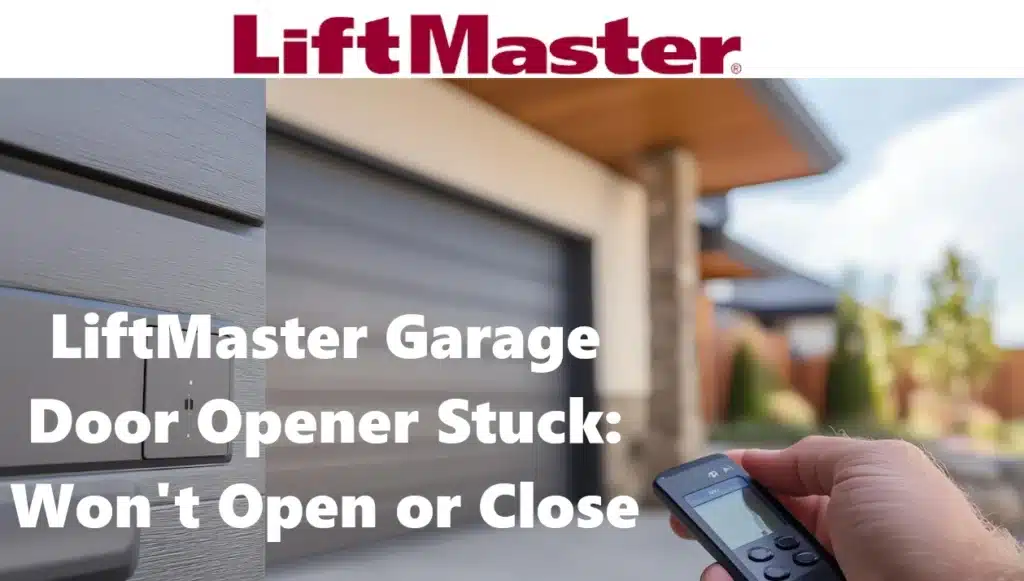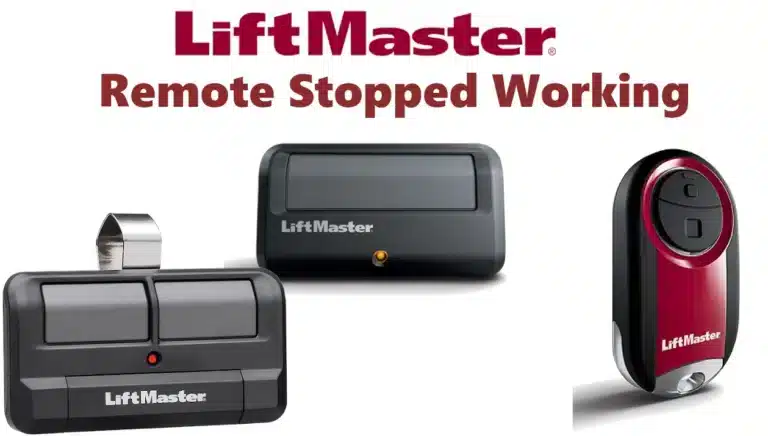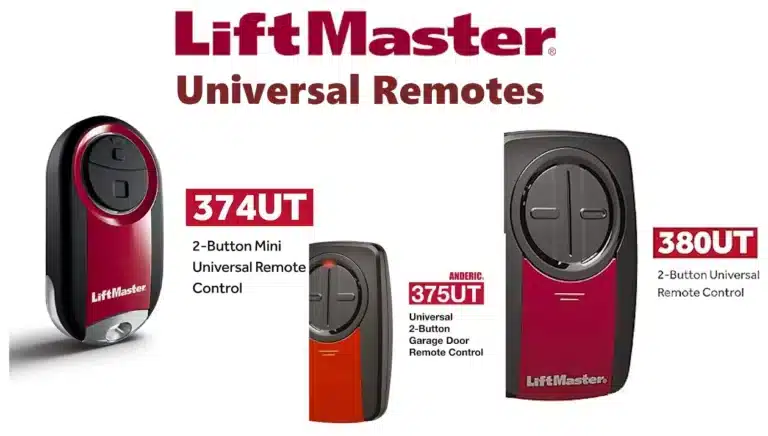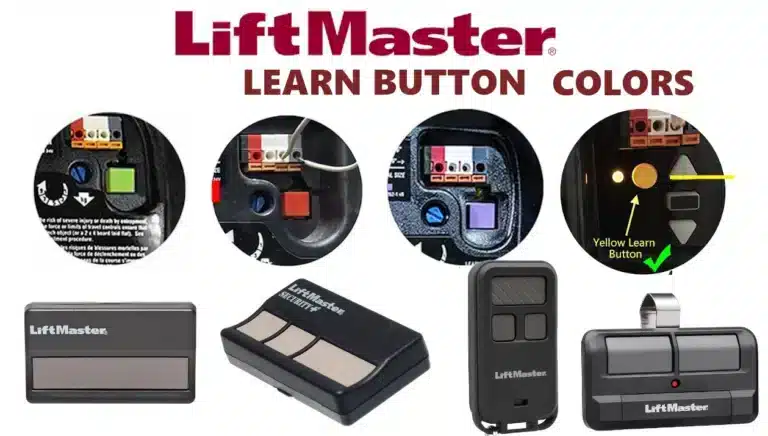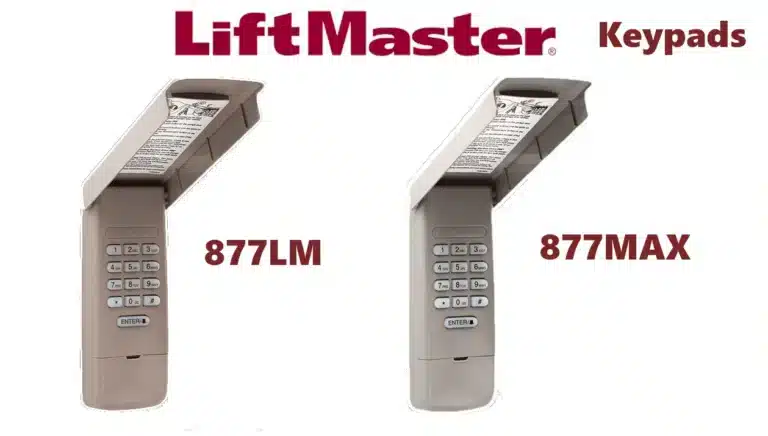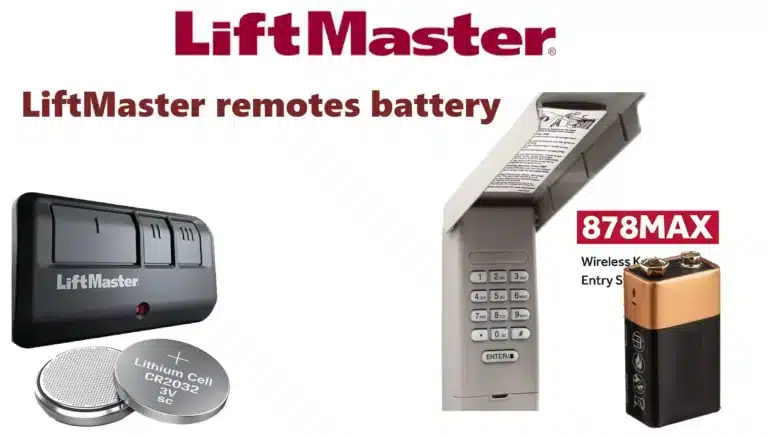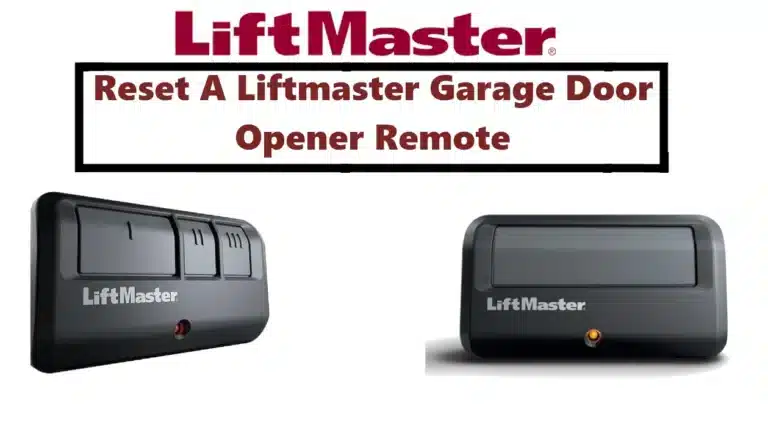This issue covers situations where the garage door does not move at all when prompted, or it starts moving but doesn’t complete the action (either failing to open fully or not closing). Use the steps below to pinpoint the cause:
1-Check Power Supply
Ensure the opener is plugged into a working outlet. If the opener has no lights or sounds, the unit may not be receiving power. Test the outlet by plugging in another device (like a lamp) . If the outlet is dead, check your garage circuit breaker or GFCI outlet (many garage outlets are GFCI protected) and reset it if tripped. If the opener has battery backup and is beeping, that indicates it’s running on battery due to loss of AC power (steady orange LED with beeps every 2 seconds means the unit is on battery power). Restore house power to resolve the issue.
2-Ensure Opener is Not in “Lock” Mode
Many LiftMaster wall control panels have a Lock button (often a little padlock icon) that, when activated, prevents the door from responding to remote controls. If your wall station’s lock feature is on, the remotes will be disabled. Press the lock button on the wall control to turn it off (the LED on the button or panel should turn off) and try operating the door again.
3-Try Both Remote and Wall Control
Attempt to operate the door using the inside wall button and the remote.
If the wall control works but the remote doesn’t, skip to Remote Control Not Working for troubleshooting the remote.
If the remote works but the wall control doesn’t, see Wall Switch Not Responding for guidance on the wired control.
If neither works (no response at all), continue with the steps below.
4-Listen for Opener Clicks or Motor Hums
When you press the control, observe what happens:
If you hear no noise at all from the motor unit (and you’ve verified it has power), the opener’s internal components might not be engaging. A single click with no movement could indicate the motor’s logic board senses a problem (e.g. a safety sensor issue or a motor fault). If lights on the opener flash but the door doesn’t move, that is typically a safety sensor obstruction or alignment issue – the opener light will flash 10 times in that case (see Safety Sensor Problems).
If the motor hums for a short time but the door doesn’t move, it often means the door is stuck or the opener’s drive is disengaged. First, check that the garage door is not manually locked – some doors have slide locks or bars that lock them in place. Also, the emergency release may have been pulled. When the red emergency-release cord is pulled down, it disconnects the door from the opener, so the motor runs but the door won’t move .
If you find the door is disconnected (you can lift it by hand easily), re-engage the trolley: typically this can be done by pulling the release cord down and back toward the opener, or by manually moving the door until the attachment point snaps back onto the trolley. Once re-engaged, try the opener again.
5-Check for Obstructions or Binding
If the door starts to move then stops or reverses, inspect the door’s path and hardware. A bent track, a broken roller, or any obstruction can cause the opener to stop moving for safety. Close the door manually and examine the tracks for debris or damage. Also check that the door opens and closes freely by hand. Broken springs are a common cause of an opener failing to lift the door – if a torsion spring or extension spring is broken, the door will be extremely heavy and the opener may only lift it a few inches (or not at all) before giving up.
In many cases the opener will attempt to open a door with a broken spring and may hum or move it slightly, but it cannot overcome the weight. Do not continue running the opener if a spring is broken, as it can strain the motor . Springs should be replaced by a trained technician. If the door is sticking in certain spots, look for damaged hinges or tracks and replace as needed.
6-Verify Travel Limits and Force Settings
If the door opens partway and stops, or closes down to the floor and then reverses, you might have an issue with the opener’s limit settings or force sensitivity. For example, if the close-limit is set too far down, the door hits the floor and the opener thinks it hit an obstacle, causing it to reverse . Similarly, if the force setting is too low, the opener might sense normal resistance as an obstruction and refuse to move the door.
Consult your LiftMaster manual for the location of the travel limit dials or buttons and the force adjustment screws. Typically, you can increase the downward force slightly or adjust the limits so the door stops at the floor without pressing hard. Only make small adjustments at a time.
Note: Newer LiftMaster models have electronic limits and force that are set automatically during setup; if they misbehave, you may need to reprogram the travel (see your manual for steps to reprogram travel limits). If adjusting these settings, always test the safety reversal after: the door must reverse upon hitting a 1½″ object on the floor.
Conclusion
If after these steps the door still doesn’t open or close properly, proceed to examine specific subsystems below (remote, wall control, sensors, etc.), or refer to the diagnostic error codes the opener may be displaying (blinking LED lights) in the Error Codes section. Remember that if basic troubleshooting doesn’t resolve the issue, it might be time to call a qualified LiftMaster technician.

